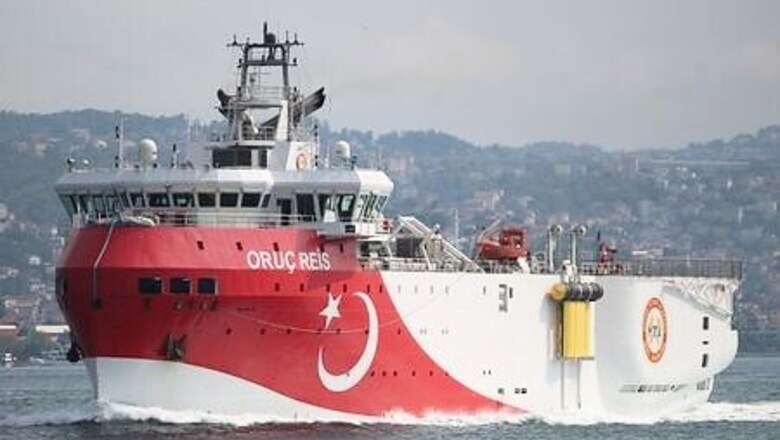
views
ΑΤΗENS The seismic vessel Oruc Reis’ arrival on Monday in a disputed area of the eastern Mediterranean, following Turkey’s announcement it was resuming energy exploration work, reignites tensions between two NATO allies with a long history of discord.
Greece and Turkey almost went to war in 1974 over Cyprus, which has since been divided, with the northern third run by a Turkish Cypriot administration recognised only by Turkey and the southern two thirds governed by the internationally-recognised Greek Cypriot government.
The following explains the main points of contention, rooted in long-standing animosity.
CONTINENTAL SHELF – WHERE DOES IT BEGIN AND END?
The continental shelf is the edge of a land mass under the sea. Greece says its multitude of islands all have a continental shelf and thus a right to an exclusive economic zone.
Turkey disputes this.
It has also been angered by Cyprus’ attempt to search for hydrocarbons in areas it says are on its continental shelf.
The boundary dispute gained new impetus on Aug. 6 when Greece signed a maritime boundary accord with Egypt, a step Turkey said infringed its continental shelf.
In turn, Greece had been furious when in November 2019, Turkey signed a maritime boundary deal with the internationally-recognised Libyan government in Tripoli.
The accord established a zone, skimming Crete, that paved the way for hydrocarbons exploration.
Greece said its deal with Egypt consigned the Turkish-Libyan one “to the trash can”.
WHAT ARE THE RELEVANT LAWS AND TREATIES?
The Paris Peace Treaties of 1947 – signed between Italy and victorious allies after World War Two – placed the 14 islands of the Dodecanese complex and dozens of islets under Greece. Ankara says that many of the islets were not specified in the treaty. Turkey wasn’t a signatory to the treaty.
Athens has set its air borders at 10 nautical miles and its sea borders at 6 miles. It says that under the Law of the Sea, it has the right to extend its sea borders to 12 miles.
The law https://www.un.org/depts/los/convention_agreements/texts/unclos/part2.htm says every state has the right to establish the breadth of its territorial sea up to a limit not exceeding 12 nautical miles.
Turkey voted against the United Nations convention on the law, recognises only 6 miles both in sea and air for Greece, and says national airspace should coincide with 6-mile nautical borders. It says a unilateral expansion to 12 miles from Greece would be an act of war.
HOW MUCH IS AT STAKE?
Greek territorial waters cover about 45 percent of the Aegean Sea and Turkey’s only 8 percent. If Greece extends its sea borders to 12 miles, its territorial waters will cover 72 percent, potentially giving it control over vital sea corridors.
The waters are also offer hydrocarbon potential.
Over the past decade, Cyprus has entered into production sharing contracts with a number of global oil & gas companies. The results were encouraging, with two of the main operators announcing significant hydrocarbon discoveries in Cyprus’ exclusive economic zone.
WHEN DID THIS ALL BEGIN?
After 400 years of Ottoman occupation, Greece launched a war of independence in 1821. Greece frequently describes its 400 years under the Ottoman Turks as being “enslaved”.
About 1.3 million ethnic Greeks, and 356,000 Turks, moved between Turkey and Greece in a population exchange in 1923 under the Lausanne Treaty, which carved out the borders of present-day Turkey.
Disclaimer: This post has been auto-published from an agency feed without any modifications to the text and has not been reviewed by an editor

















Comments
0 comment